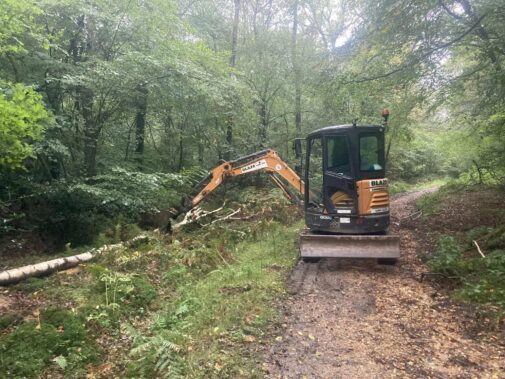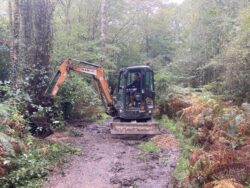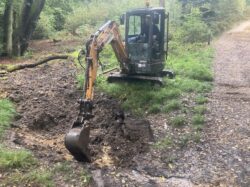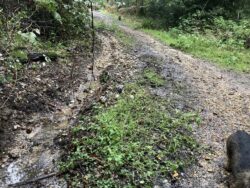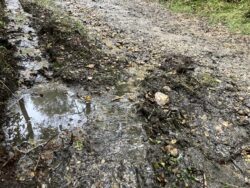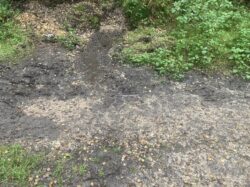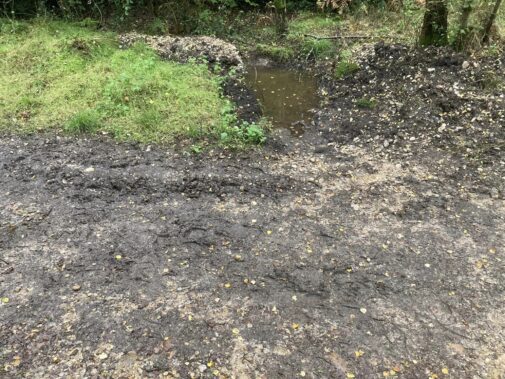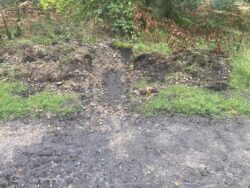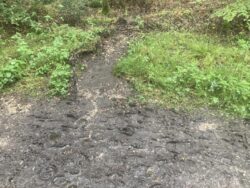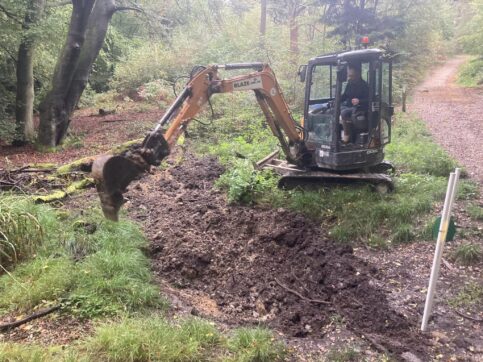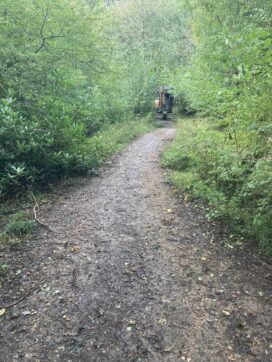Here are the photos of Frank Everest at work and the water run-offs afterwards. Success. The trails have negliible standing water on them. More text below the images.
This started off as a little posting to thank Frank for digging out the water run-offs last Friday. It is turned into a much wider celebration of everything that is good in people. It’s easy to post a rant, isn’t it, and unfortunately NextDoor.com is full of them. So when something is good in life, we owe it to ourselves to post that as well. Susie and I find it such a privilege to be part of a very positive group of people, the horse riders, who have found a way over the years to coexist beautifully with walkers and cyclists (in all but a very few cases). There has been peace in the woods for many years, and we all relish the idea that so many people can benefit, both in physically and mentally, from it as an amenity for all of us. It has been very difficult to get more than three or four people at a time out for the volunteer sessions when we chip away with our little spades or clip away with secateurs. So when there is major work to be done we normally have to recourse to spending tens of thousands of pounds of club money (your money, not tax payers’) to get the contractors in. By the way, the next phase of trail renovation will probably be in summer 2024.
One task which does not require a huge contract is digging out the water run-offs, or ‘grips’ as Forestry England call them. These are needed so that water does not accumulate on the path but runs off into small metre-long man-made ponds off the side. Water pooling on the trails means the horses hooves turn it to mud and that little stream of water eventually destroy the surface of the trail. Remember, building the trails costs about £110 per metre; and that’s your money, members’ contributions, and some fundraising.
Imagine our delight, then, when Lana Craker of Waylands Equestrian, long-term supporter of the Hodgemoor Riding Association, called us to say that her partner Frank Everest was willing to deploy one of his diggers and his own services for a day. Having got the permission of Forestry England (thank you Rob and Simon) and completed the Health and Safety paperwork requirements we managed to get out in the woods on Friday. I had marked most of the sites and accompanied him throughout. Frank’s skill both in the dig and in the beautifying enabled us to complete two days’ work in four hours between nine and one, including the really big culverts on Susie’s Loop east side and the Mount (top and bottom). I am extremely grateful to Frank and appreciative of his fine work.
But you can see why I choose to write about the bigger picture. When we work together it can be harmonious and satisfying. That is a life many of us like to lead.
Post-script 3 days later. Success. I have been looking in the last couple of days at the results of digging out the water run-offs by Frank Everest and the results are excellent. In every case, the trail is free of water, even after these heavy rains, and the run-off shows signs of water having been collected, and then absorbed. we feel confident that the life of the paths are greatly extended by this work. A stitch in time saves nine. Comments always gratefully received. Marcus
